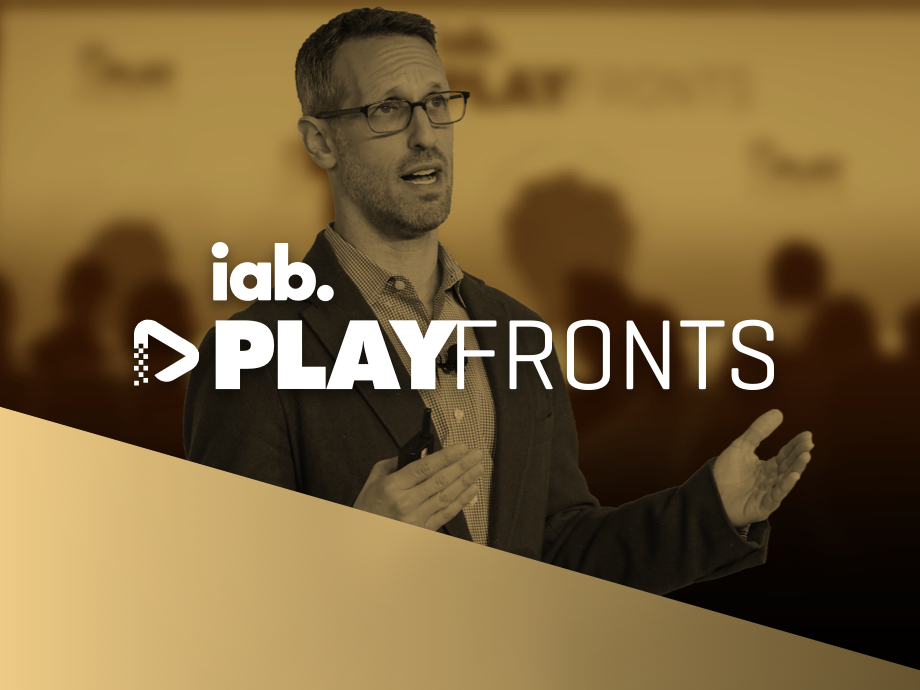mit uns

Blog
Where Loyalty Lives: Connecting with Players Through Their Favorite Games
8 Lesezeit
As gaming becomes a critical pillar in the media mix, brands looking to deepen audience engagement should lean on the power of existing fandom.
Whether it's a passion for a franchise like Call of Duty, or a preference for a platform like PC, player loyalty to specific games and ecosystems opens a unique window of opportunity for advertisers.
Officially, a “fan” is an admirer or enthusiast of a person, sport, team or hobby. In the context of our latest research, they are also someone who plays a particular game or platform often (weekly or greater frequency), and considers that game or platform one of their favorites.
The research shows that these gaming fans are not just more engaged, they’re more receptive to the brands they encounter in their favorite gaming environments. For marketers seeking to build relevance, trust, and impact, aligning with the games players love can drive measurable business outcomes.
Relevance, Quality, and Trust: The Halo Effect of Gaming
Gaming environments offer unmatched potential for brand storytelling, not just because of scale, but because of the trust and relevance players attribute to advertising within these spaces. The latest research shows that simply appearing in a gaming context can elevate how players perceive a brand.
Some standout metrics include:
- 58% of players say brands advertising in games are high-quality
- 54% of players perceive brands advertising in games as premium
- 54% of players perceive brands advertising in games as premium
- 56% of players agree that when a brand they like appears in a game, it feels more relevant
- 52% say they would be more likely to recommend those brands
- 46% of Activision Blizzard players feel more loyal to brands advertised in-game
These effects are rooted in the immersive, emotionally resonant nature of gaming. Unlike passive media, gaming invites deep attention and interaction that create space for advertising to feel additive, not intrusive.
This receptivity isn’t limited to endemic categories. In fact, 75% of players say they are neutral or don’t mind seeing non-gaming-related brands in their games
In a busy attention economy, gaming doesn’t just host brand messaging—it amplifies it.
.gif)
Mobile, Console, and PC Each Offer Unique Opportunities
Gaming platforms offer distinct emotional and perceptual cues, and loyalists within each platform respond differently to branded messaging:
Console Gaming (e.g., Xbox) offers a premium, high-trust environment. Nearly three in four players say they like brands that advertise here, and 70% consider those brands relevant to them.
PC Gaming fosters brand perceptions around trust, reliability, and credibility. Sixty percent of PC players say they trust the brands advertised in these spaces, with 54% indicating strong purchase intent.
Mobile Gaming offers distinct value for creativity, uniqueness, and high-frequency engagement. Players find these ads less intrusive and more discovery-oriented, particularly for CPG and food brands.
Understanding the psychological frame of each platform—and how loyal players engage within them—is essential for building effective creative strategies.
Fandom Amplifies Advertising Impact
Fans of specific games or platforms are more than just players—they’re advocates, communities, and culture-shapers. Their loyalty results in heightened emotional engagement and a stronger openness to brand messaging within their preferred gaming contexts.
According to our recent research, one in three gamers feel even more positively about brands after seeing them paired with gaming environments.
Across the board, fans rated brands more highly than non-fans across measures like relevance, fit, trust, and purchase likelihood. For example:
Candy Crush Saga fans are 2.3x more likely to say they would recommend a brand they encounter while playing compared to non-fans.
Call of Duty fans are 1.9x more likely to say they would be loyal to a brand advertised in-game.
These findings aren’t limited to specific franchises—they represent a consistent halo effect driven by emotional connection and frequency of play.
.gif)
Fan Loyalty Drives Action, Not Just Awareness
Gaming fans are more than just attentive—they’re open to brand messaging and willing to act on it. Over half of the gaming audience (52%) say they’re receptive to learning about brands within their favorite games, and 47% are more likely to purchase from those they see in games they play regularly.
But among self-identified fans, these intentions become even more pronounced.
In addition to their higher engagement levels, fans demonstrate elevated purchase likelihood and brand favorability across a range of metrics. For example:
World of Warcraft fans are 1.7x more likely to say they’d recommend a brand advertised in-game, and 1.7x more likely to express loyalty to those brands compared to non-fans.
Candy Crush Saga fans report a 2.2x greater likelihood of liking the brand, and are 2.0x more likely to view it as relevant to them.
Call of Duty: Mobile fans show a 1.9x lift in brand affinity and a 1.8x increase in stated loyalty compared to non-fans.
For marketers, the message is clear: tapping into player fandom is not just about visibility. It’s about driving meaningful, measurable movement along the full path to purchase.
Why Fandom Should Shape Your Omnichannel Strategy
Gaming is a high-impact, omnichannel pillar where brand perception is shaped by context, relevance, and emotional alignment. With the right partner and when entering gaming thoughtfully, brands that prioritize placement within fans’ favorite games and platforms are remembered, trusted, and chosen.
For advertisers building integrated strategies, leaning into the power of fandom in gaming environments isn’t just a creative consideration—it’s a winning strategy.
And perhaps most compelling: gaming’s halo effect doesn’t end when the controller is set down. Players who encounter brands in these environments carry those perceptions with them into the broader marketplace—more likely to recommend, repurchase, and recall the brand well beyond the game session. In a media landscape saturated with fleeting impressions, gaming offers something few channels can: sustained, scalable brand connection rooted in loyalty and intent.
Tailoring Creative to the Platform Experience
To respect the loyalty of gaming fans, marketers must align their creative and format choices with the strengths of each gaming environment:
On mobile, lean into short-form, opt-in formats like Rewarded Video and Playables that offer value and relevance during high-frequency engagement moments.
On console, focus on immersive brand storytelling through brand partnerships and click-to-engage integrations that reflect the premium nature of the experience.
On PC, emphasize reliability and high-value messaging that resonates with more strategic, invested audiences.
These approaches not only respect the platform’s purpose but also align with what fans expect and appreciate from in-game advertising.
Fans also perceive brands as more premium, relevant, and high-quality, with loyalty scores rising more than 25 percentage points. For advertisers, this means gaming delivers more than engagement—it delivers measurable momentum down the funnel.
About the Author
Antonio Miller is a Research Manager of Advertising Insights at Activision Blizzard Media. In this role, he oversees strategic research initiatives focused on the influence and opportunity of gaming to advertisers worldwide. Before joining Activision Blizzard Media, Antonio was a Researcher at NPR, where he concentrated on brand and audience insights through the lens of digital audio sponsorship experiences. Antonio is based in Los Angeles, California and is a lover of live music, emerging technology, and exploring new cities one street market at a time.
Werben Sie
mit uns
Fangen wir damit an, uns zu verbinden
DIE NEUESTEN NACHRICHTEN UND INHALTE
Mobile Gaming: The Common Denominator Among All Game Players
In the increasingly diverse world of gaming, reaching unique, valuable audience segments offers a significant opportunity for brands and advertisers.
Why Multiplatform Players are More Receptive to Advertising
As the gaming industry continues to take its place in the entertainment ecosystem, understanding the different audience segments becomes increasingly critical for brands looking to tap into this lucrative market.
IAB PlayFronts 2024 Recap
The IAB PlayFronts 2024 marked a significant milestone in the digital entertainment sphere, bringing together industry innovators to share insights and chart the future of interactive media for the third year in a row.








